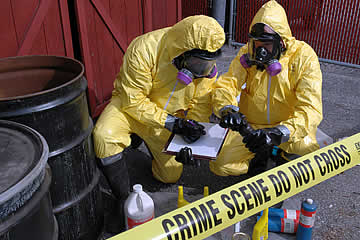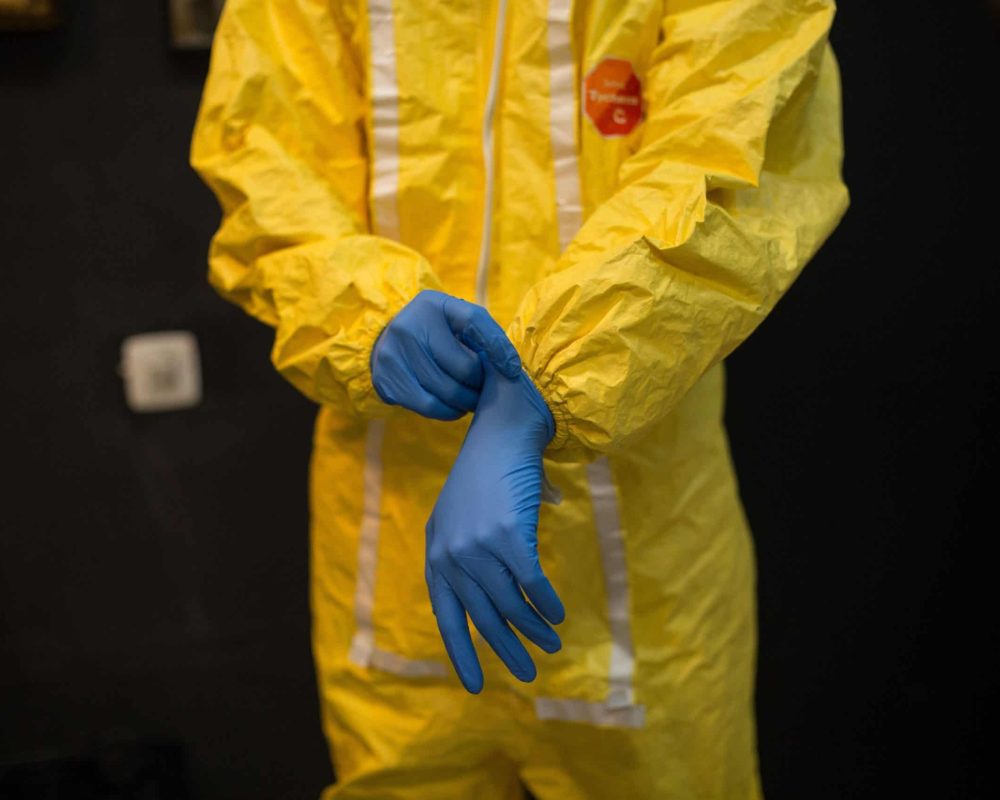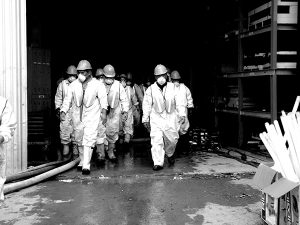Flood Damage Restoration: Quick and Effective Recuperation for Your Home
Expert Biohazard Clean-up for Criminal Activity Scenes, Injury Incidents, and Infected Areas
In the world of specialist biohazard clean-up, precise focus to detail and adherence to safety methods are extremely important. As we dig right into the intricacies of biohazard clean-up for these sensitive settings, a deeper understanding of the challenges and crucial procedures entailed will emerge, losing light on the crucial duty of expert cleaning solutions in bring back safety and tranquility of mind.

Significance of Biohazard Cleaning
Biohazard clean-up following criminal offense scenes and injury incidents is crucial for ensuring the security of people and the environment. When these occurrences happen, they usually leave behind a range of biohazards such as blood, physical liquids, and other potentially contagious products. These materials can nurture harmful virus like viruses and germs, posturing severe wellness threats otherwise properly cleaned up and sanitized.
Professional biohazard clean-up services are educated to deal with these unsafe products securely and effectively. They have the necessary devices, such as personal safety gear and specialized cleaning up agents, to completely sanitize the influenced locations. By delegating the cleanup to experienced specialists, people can stay clear of direct exposure to unsafe microorganisms and stop the spread of contagious illness.
Additionally, appropriate biohazard cleaning is important for safeguarding the environment. Inappropriate disposal of biohazardous products can contaminate soil, water sources, and air, posing a threat to wild animals and the environment. By adhering to stringent cleanup protocols, professionals can guarantee that biohazards are safely removed and gotten rid of according to regulations, minimizing the danger of environmental contamination.
Types of Biohazards Encountered
Different hazardous materials frequently encountered in criminal offense scenes and injury occurrences present substantial health dangers if not handled correctly. Blood and bodily fluids are amongst the most common biohazards discovered in these scenarios.
An additional kind of biohazard frequently come across is sharp objects like needles, broken glass, and other things that can trigger injuries and transfer infections. Chemical threats are additionally a concern, as crime scenes may have compounds like tear gas, pepper spray, or medication production products that require customized handling and disposal procedures to avoid additional damage.
In addition, mold and mildew and bacteria growth can take place precede where decay or long term direct exposure to dampness has taken place. These microbes can release contaminants and allergens into the air, presenting respiratory system threats to those revealed. Overall, biohazard clean-up experts need to be well-appointed and experienced to effectively take care of these various types of dangerous materials to ensure the security of themselves and others.
Devices and Protective Gear
When attending to the important job of managing biohazards experienced in crime scenes and trauma events, the use of appropriate tools and protective equipment is critical to guaranteeing the safety of people associated with the clean-up procedure. Personal protective equipment (PPE) such as handwear covers, safety glasses, masks, and coveralls are important to prevent straight contact with potentially harmful materials. Respirators are important when handling biohazards that might end up being airborne, protecting employees from inhaling unsafe particles. Specialized cleaning devices like biohazard bags, sharps, and anti-bacterials go right here containers are necessary for the secure collection and disposal of contaminated products. Additionally, heavy-duty devices such as industrial-grade cleaner, foggers, and ozone generators might be called for to completely sterilize the damaged area. Ensuring that all equipment is effectively preserved, routinely evaluated, and used according to safety and security standards is important in decreasing the risk of direct exposure to biohazards during cleaning operations.
Clean-up Process and Techniques
Detailed and effective cleaning of biohazardous products from criminal offense scenes and trauma occurrences requires careful interest to detail and adherence to rigorous safety methods. The clean-up process generally entails a number of vital steps.
Complying with the removal of biohazardous products, the affected location undertakes a comprehensive cleansing and sanitation process. This action entails the usage of specialized cleansing agents and devices to make certain that all traces of contamination are gotten rid of. After cleansing, the location goes through strenuous screening to confirm that it is free and risk-free of any kind of remaining biohazards.

Purification and Disposal Treatments
To make sure complete purification and appropriate disposal of biohazardous products, complying with the precise cleanup procedure, details procedures have to be thoroughly followed with strict adherence to safety and security protocols. Decontamination entails the elimination or neutralization of pollutants to decrease the threat of direct exposure and spread of unsafe compounds. This process typically consists of cleaning, disinfecting, and sanitizing the damaged area making use of specific equipment and EPA-approved chemicals.
As soon as decontamination is finished, proper disposal of biohazardous products is important to stop additional contamination or injury. Biohazardous waste, such as blood-soaked materials or physical liquids, have to imp source be carefully gathered, packaged, and labeled according to governing standards. ATP testing. These materials are then transferred to qualified centers for disposal via ideal networks, ensuring compliance with regional, state, and government regulations

Conclusion
In verdict, specialist biohazard clean-up is essential for making sure the reliable and risk-free removal of hazardous products from crime scenes, injury occurrences, and contaminated spaces. By making use of customized tools, safety gear, and adhering to appropriate cleanup procedures and strategies, biohazard clean-up teams can properly get rid of and decontaminate of biohazards, minimizing the threat of exposure and injury to individuals and the environment.
As we dive into the intricacies of biohazard cleaning for these sensitive settings, a deeper understanding of the difficulties and crucial procedures included will certainly emerge, losing light on the important function of professional cleaning solutions in recovering security and tranquility of mind.
Professional biohazard clean-up services are trained to take care of these dangerous products safely and properly. By following stringent cleaning procedures, specialists can ensure that biohazards are securely removed and disposed of in conformity with laws, reducing the danger of ecological contamination.
In general, biohazard cleaning professionals should be qualified and about his well-appointed to efficiently take care of these numerous types of dangerous products to make sure the safety of themselves and others.
When attending to the essential task of handling biohazards experienced in criminal offense scenes and injury occurrences, the use of appropriate devices and safety equipment is extremely important to making certain the safety of individuals involved in the cleanup process.